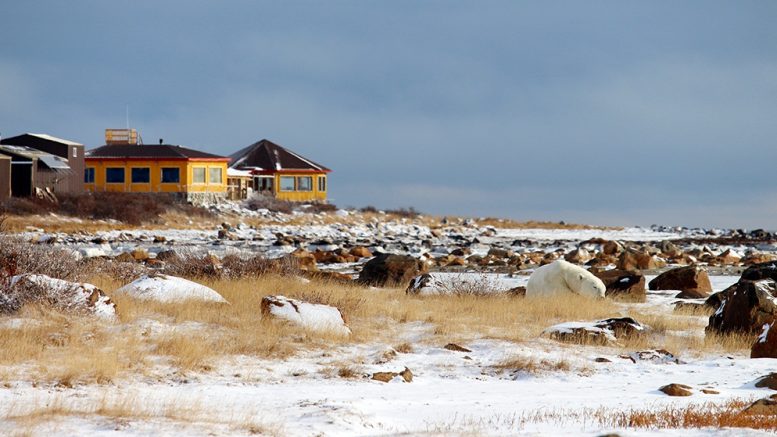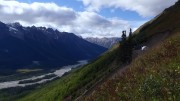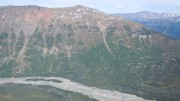The Manitoba Saskatchewan Prospectors and Developers Association (MSPDA) takes the strong view that while it agrees with Stephen Fletcher’s view that a creating a new national park on Manitoba’s Nickel Belt is an irresponsible action by the federal government (T.N.M., Nov. 16-Dec. 10/17), he should not have so quickly suggested a park in the Seal River area as an alternative.
Mr. Fletcher, Member of the Legislative Assembly for Charleswood-St James-Assiniboia and long-time federal Conservative Member of Parliament from 2004-15, is correct that establishing a park on the nickel belt only discourages further exploration in the province by its placement on an area of high mineral potential.
This is especially true given that northern Manitoba’s mining industry is in serious trouble. Vale in Thompson closed Birch Tree and in 2018 will close the smelter in Thompson. Add this to the closure in just three years of Triple 7 and Reed Lake mines operated by Hudbay Minerals. This will have a severe impact on Flin Flon and the supporting infrastructure since these mines are currently the only source of feed for the Flin Flon mill and part of the feed for the zinc plant.
Northern Manitoba is already reeling from the closure of the Churchill port. The closure of western Canada’s only northern railroad — the Hudson Bay Railroad — may not be far off given they will have no industry north of The Pas to service.
It looked for a while that the four main economic engines in northern Manitoba would be shut down over the next three years. While Kraft paper came in and saved the day for the paper mill in The Pas, the future of the other three towns and their connecting railroad does not look so bright.
Manitoba under the stewardship of the New Democratic Party had a long history of park creation being strongly influenced by out-of-province and out-of-country groups such as the World Wildlife Federation, the PEW Foundation, the Hewlett Foundation out of California, and others.
The NDP designated numerous parks; some the size of PEI, most in the north and naturally outside the Perimeter Highway within which reside 65% of Manitoba residents. These parks along with other land withdrawals account for over 20% of Manitoba.
But that was nothing: in the dying mandate of the NDP, the Boreal Initiative wanted 50% of the boreal forest in Manitoba which includes taiga and barren lands in the far north.
It was an unprecedented, over-reaching land grab which our association fought strongly against.
With some minor exceptions, the wilderness of our north does not need “protecting” given our strict environmental laws. What needs protection is land for development and for our northern communities.
Large wilderness parks have not only the effect of sterilizing large areas and preventing new mining camps from ever being developed, but they also surround communities with areas of no hydro, forestry and mining. There is no farming and few secondary industries so this for many communities makes them into wilderness ghettos.
Indigenous peoples can see the well-supported infrastructure inside the Perimeter Highway on TV, tablets and cell phones, but many live with 80% unemployment in communities lacking services other Manitobans take for granted.
We do not need more parks. We need more exploration and economic development with government sharing the revenue to support adjacent communities on their traditional land.
Enough First Nation leaders in Manitoba were on the same page with the MSPDA in that they were pro-development and didn’t want foreigners influencing what was going to happen in their own backyard.
Thanks mainly to these Indigenous leaders and the MSPDA objections to a lesser extent, the Boreal Initiative was halted. Communities with 80% unemployment need development and hope for the future. Mining is the largest employer of Indigenous people in Manitoba and the third largest industry in Manitoba.
As much as we appreciate Mr. Fletcher’s support in regard to disagreeing with a national park on the Thompson Nickel Belt, his promotion of the Seal River area as an alternative is worse than a park on the Nickel Belt.
The future of Canada is in its North and we should not be sterilizing vast areas from development when the area is not threatened in any way just because people love nature.
We all love nature but the economy of the province for future generations should not be compromised.
It is important to note here, that one lively gold play in the world right now is in conglomerates of Aphebian age (Lower Proterozoic) in Australia, in some ways similar to the Witwatersrand basin in South Africa — the most prolific area of gold in the world which held half the world’s gold resources in 2002.
Where do we have quartz pebble conglomerates similar to the Wits basin host rocks in Manitoba and of similar age with gold? In the Seal River area and it is wide open for staking.
Where do we have huge diamond potential? In the Nejanilini Lake area just to the north, including the Seal River area which has the second oldest continental crust in Canada.
This crust exceeds 3.2 billion years and it’s a great place to look for diamonds.
Unfortunately a good portion of this prospective geology lays beneath one of these new parks the size of some countries.
The Caribou River Provincial Wilderness Park, given its potential, should be opened up for diamond exploration and if diamond pipes are found, other land with less potential can be exchanged for it especially since the park is not needed in the first place.
We certainly don’t need yet another park next door to this one — not with that kind of mineral potential in the area.
Not a single explorationist or exploration company in Manitoba supports Mr. Fletcher’s view that the Seal River should be considered for a park and all that I speak to are adamant in their voice against it. He obviously did not consult sufficiently with the northern exploration community.
The MSPDA representing prospectors and junior companies, as well as our sister association in southern Manitoba, rejects this proposal and we ask Mr. Fletcher to withdraw his proposal for the Seal River area.
Manitoba has enough wilderness parks for rich tourist to play in; we need more exploration and investment in northern Manitoba given its legacy and huge untested mineral potential and that means keeping land available for exploration.
This area in the far north has barely been explored. We need the provincial government to scuttle its parks branch that is deterring development of our north and to put policy and incentives in place to attract investment.
We have a Conservative government. We expect it to stimulate exploration in the north so we can find the mines that support our communities and that pay for a lot of the social necessities here and in the south.
Mining is our main industry in the north. We have given the provincial government concrete and detailed proposals on how to do this and we now await action.
Parks on land of high mineral potential is irresponsible and bad stewardship deterring sustainability of our northern communities and people.
Stephen Masson, president
Manitoba-Saskatchewan Prospectors and Developers Association (MSPDA)




Be the first to comment on "Letter to the editor: A better suggestion for parkland in northern Manitoba"